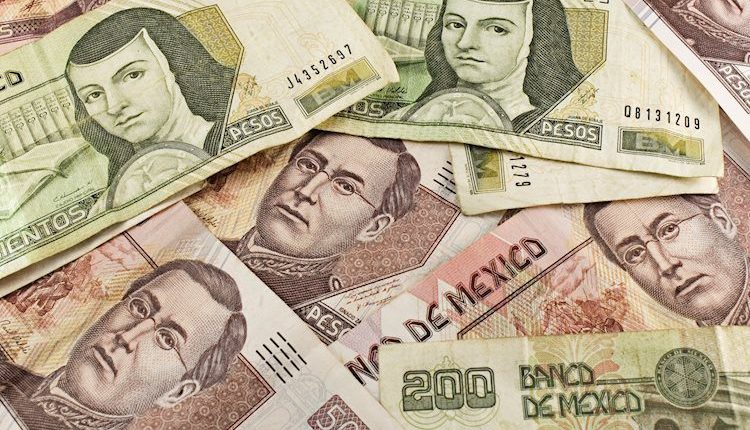- Mexican Peso tumbles following Trump’s appointments of Mike Waltz and Marco Rubio.
- Banxico expected to cut rates by 25 bps amid heightened US-Mexico tensions.
- Upcoming US inflation and Retail Sales data to impact USD/MXN currency pair.
The Mexican Peso extends its losses against the Greenback on Tuesday on risk aversion due to US President-elect Donald Trump’s first appointments to his cabinet. Trump’s campaign proposals of increasing tariffs and lowering taxes are inflation-prone, which would exert pressure on the Federal Reserve (Fed) to keep rates higher than otherwise. At the time of writing, the USD/MXN trades at 20.62, gaining 1.38%.
Risk aversion due to Trump’s naming Mike Waltz as National Security Advisor and Marco Rubio as Secretary of State hurt the prospects of the Mexican currency, which has tumbled over 2% since Monday. Waltz and Rubio are known for their tough stance on China, hinting that tariffs would likely be imposed.
Mexico’s economic schedule remains absent, though USD/MXN traders are eyeing the Bank of Mexico (Banxico) monetary policy decision on November 14. According to Reuters, 19 of 20 economists expect a 25-basis-point (bps) rate cut to the main interest reference rate, pushing it down to 10.25%.
On Monday, Mexico’s Secretary of Economy Marcelo Ebrard suggested that the Mexican government could retaliate with its own tariffs on US imports. He stressed that tariffs would increase prices in the US.
Recently, Fed officials had crossed the wires. Governor Christopher Waller failed to comment on monetary policy. Contrarily, Richmond Fed President Thomas Barkin stated that “Inflation might be coming under control or might risk getting stuck above the Fed’s 2% target.”
Ahead this week, Mexico’s economic docket will feature the Banxico policy decision. On the US front, Fed speakers, inflation on the consumer and producer sides, and Retail Sales will dictate the USD/MXN pair direction moving forward.
Daily digest market movers: Mexican Peso on the defensive ahead of US CPI
- The USD/MXN has risen as the US Dollar Index (DXY), which tracks the performance of the American currency against another six, climbs to a six-month high of 106.15, up by over 0.60%.
- Mexico October Consumer Confidence, revealed on Monday, shows that Mexicans are slightly more optimistic about the economy.
- Industrial Production figures for September were mixed as traders brace for Banxico’s monetary policy decision.
- The US Consumer Price Index (CPI), to be revealed on November 13, is expected to edge up from 2.4% to 2.6% YoY and is projected to remain unchanged on MoM figures at 0.2%.
- The Core CPI is projected to stall on annual and monthly figures, each at 3.3% and 0.3%.
- Data from the Chicago Board of Trade, via the December fed funds rate futures contract, shows investors estimate 23 bps of Fed easing by the end of 2024.
USD/MXN technical outlook: Mexican Peso plunges again as USD/MXN rises above 20.50
The USD/MXN uptrend remains intact, with the Greenback extending its gains sharply, threatening to challenge the year-to-date (YTD) high of 20.80 reached on November 6. If surpassed, the next resistance would be the psychological 21.00 figure, followed by the March 8, 2022 peak at 21.46.
Conversely, sellers must push the exchange rate to the 20.00 figure, if they would like to challenge the 50-day Simple Moving Average (SMA) at 19.70. On additional weakness, the USD/MXN next support would be the psychological figure at 19.50, followed by the October 14 low of 19.23.
Banxico FAQs
The Bank of Mexico, also known as Banxico, is the country’s central bank. Its mission is to preserve the value of Mexico’s currency, the Mexican Peso (MXN), and to set the monetary policy. To this end, its main objective is to maintain low and stable inflation within target levels – at or close to its target of 3%, the midpoint in a tolerance band of between 2% and 4%.
The main tool of the Banxico to guide monetary policy is by setting interest rates. When inflation is above target, the bank will attempt to tame it by raising rates, making it more expensive for households and businesses to borrow money and thus cooling the economy. Higher interest rates are generally positive for the Mexican Peso (MXN) as they lead to higher yields, making the country a more attractive place for investors. On the contrary, lower interest rates tend to weaken MXN. The rate differential with the USD, or how the Banxico is expected to set interest rates compared with the US Federal Reserve (Fed), is a key factor.
Banxico meets eight times a year, and its monetary policy is greatly influenced by decisions of the US Federal Reserve (Fed). Therefore, the central bank’s decision-making committee usually gathers a week after the Fed. In doing so, Banxico reacts and sometimes anticipates monetary policy measures set by the Federal Reserve. For example, after the Covid-19 pandemic, before the Fed raised rates, Banxico did it first in an attempt to diminish the chances of a substantial depreciation of the Mexican Peso (MXN) and to prevent capital outflows that could destabilize the country.
Read the full article here

